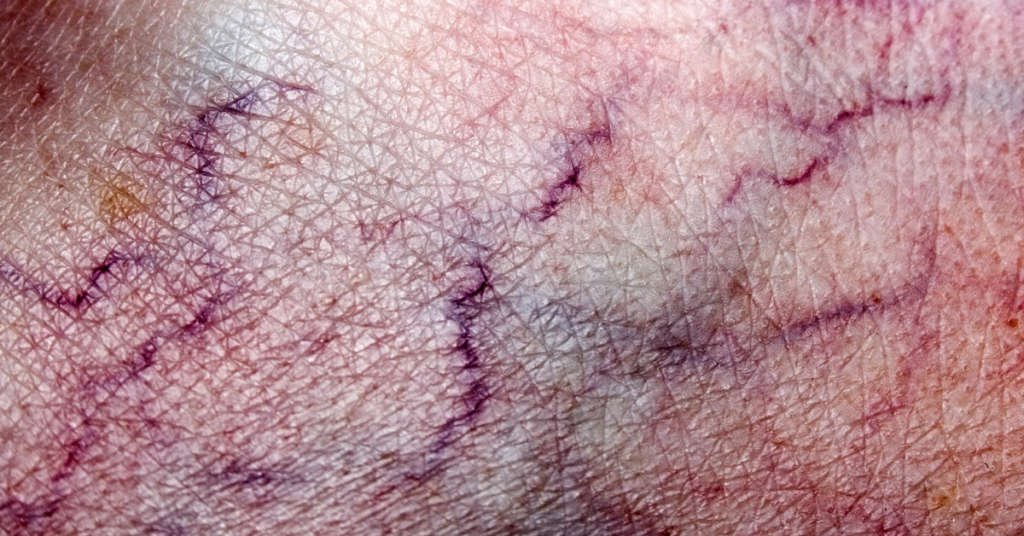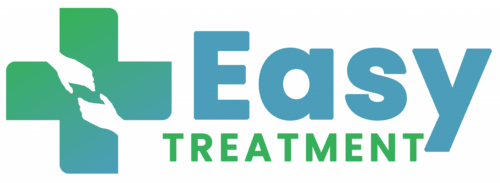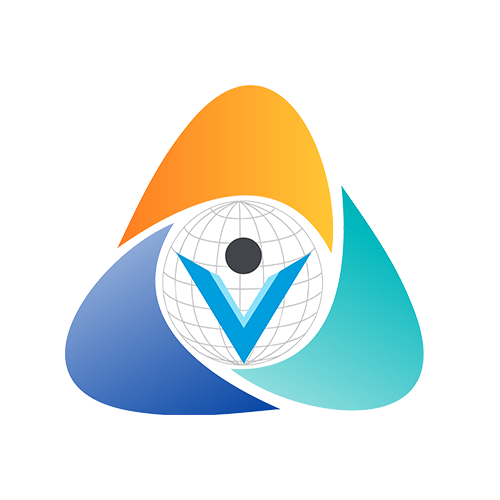Reticular veins—those delicate blue-green networks beneath your skin—are more than just a cosmetic concern. Often dismissed as “mild” compared to varicose veins, these “feeder veins” can lead to discomfort, self-consciousness, and even more serious vascular issues if ignored. At Easy Treatment, we believe knowledge is power. This guide dives deep into reticular veins treatment, explaining their causes, risks, and the advanced solutions available today. Whether you’re seeking relief from symptoms or a confidence boost, we’ll walk you through every step to reclaim healthier, clearer skin.
What Is a Reticular Vein? Understanding the Basics
Reticular veins are small, flat veins that lie just beneath the skin’s surface, often appearing as blue, green, or purple lines. They’re nicknamed “feeder veins” because they supply blood to spider veins, making them a critical link in venous health.
Key Characteristics:
- Location: Most common on thighs, behind knees, calves, and face.
- Appearance: Flat, non-bulging, and often clustered.
- Symptoms: Mild itching, burning, or aching after prolonged standing/sitting.
Why They Matter:
While not as prominent as varicose veins, reticular veins can:
Cause discomfort that impacts daily life.
Signal poor circulation.
Progress to spider veins if untreated.

What Causes Reticular Veins? A Closer Look
Understanding the root causes helps in prevention and effective reticular veins treatment. Here’s a breakdown:
- Genetics
If your family has a history of vein issues, you’re more likely to develop reticular veins. Inherited weak vein walls or faulty valves allow blood to pool, stretching veins over time. - Hormonal Fluctuations
- Pregnancy: Increased blood volume and progesterone relax vein walls.
- Menopause: Declining estrogen weakens collagen, reducing vein elasticity.
- Birth Control Pills: Synthetic hormones can dilate veins.
- Lifestyle Factors
- Sedentary Jobs: Sitting/standing for hours strains leg veins.
- Obesity: Excess weight increases abdominal pressure, hindering blood flow.
- Smoking: Nicotine damages blood vessels and reduces circulation.
- Aging
Veins naturally lose elasticity with age, making them prone to swelling and dysfunction. - Sun Exposure
UV rays break down collagen in facial skin, making reticular veins more visible.
Knowing these causes helps in preventing and effectively managing reticular veins treatment.
ymptoms of Reticular Veins: When to Seek Help
While often asymptomatic, reticular veins can cause:
- Aching or Heaviness: Especially after long flights or desk work.
- Itching/Burning: Around the vein clusters.
- Restless Legs: An urge to move legs due to discomfort.
- Swelling: Mild puffiness in ankles or calves.
When to Act:
If symptoms disrupt sleep, work, or self-esteem, it’s time to explore treatment of reticular veins.ng a specialist for reticular veins treatment is essential. Ignoring these signs can lead to further complications.
Why Treat Reticular Veins? Beyond Aesthetics
Ignoring reticular veins can lead to:
- Worsening Spider Veins: Feeder veins supply blood to spider veins, which multiply if untreated.
- Chronic Venous Insufficiency (CVI): Poor blood flow causes swelling, skin ulcers, and hyperpigmentation.
- Blood Clots: Rare but possible if stagnant blood pools in deeper veins.
Benefits of Treatment:
- Pain Relief: Alleviate itching, burning, and heaviness.
- Prevent Complications: Stop progression to severe vein diseases.
- Boost Confidence: Feel comfortable in shorts, skirts, or swimwear again.
Reticular Veins Treatment: Modern Solutions Explained
Today’s treatments are quick, minimally invasive, and tailored to your needs. Here’s a detailed look:
1. Sclerotherapy: The Gold Standard
How It Works:
A fine needle injects a sclerosing agent (e.g., polidocanol) into the vein, irritating its lining. The vein collapses and is absorbed by the body over 3–6 weeks.
What to Expect:
- Procedure Time: 15–30 minutes.
- Downtime: None. Resume daily activities immediately.
- Results: 80–90% improvement after 1–3 sessions.
Ideal For: Medium-sized reticular veins on legs or face.
2. Laser Therapy: Precision Without Needles
How It Works:
A focused laser beam targets hemoglobin in the blood, heating and sealing the vein.
Types of Lasers:
- Nd:YAG Laser: Penetrates deeper for thicker veins.
- Pulsed Dye Laser: Gentle for facial veins.
What to Expect:
- Procedure Time: 20–40 minutes.
- Downtime: Mild redness for 24–48 hours.
- Results: Gradual fading over 2–4 weeks.
Ideal For: Small, superficial veins or sensitive areas like the face.
3. Radiofrequency Ablation (RFA): Advanced Care
How It Works:
A catheter delivers radiofrequency energy to heat and close the vein.
What to Expect:
- Procedure Time: 30–60 minutes.
- Downtime: 1–2 days of light activity.
- Results: Immediate closure; full results in 4–6 weeks.
Ideal For: Larger reticular veins near deeper vessels.
4. Compression Therapy: Supportive Care
How It Works:
Medical-grade stockings (20–30 mmHg pressure) improve circulation, reducing swelling and discomfort.
Tips for Use:
- Wear them daily for 6–12 weeks post-treatment.
- Put them on first thing in the morning before swelling starts.
Ideal For: Managing symptoms alongside other treatments.
5. Natural Remedies: Complementary Approaches
While not a substitute for medical care, these can help:
Cold Compress: Reduces facial vein visibility temporarily.
Horse Chestnut Extract: Strengthens vein walls (consult a doctor first).
Elevation: Raise legs above heart level for 15 minutes daily.
The Treatment Journey: What to Expect
Here’s what you can expect during your journey to healthier veins:
- Consultation: A vein specialist will assess your condition and discuss the best treatment options for you.
- Diagnosis: Diagnostic imaging, such as ultrasound, may be used to evaluate the severity of your reticular veins.
- Treatment: Depending on the chosen method, the procedure will be performed on an outpatient basis.
- Recovery: Most treatments involve minimal downtime, allowing you to return to daily activities quickly.
- Results: With proper care, visible results are noticeable within weeks, and symptoms like pain and discomfort will improve.

Post-Treatment Care
Proper post-treatment care is essential to ensure long-lasting results. Here are some tips:
- Wear Compression Stockings
These support vein healing and prevent further issues. - Stay Active
Regular, light exercises such as walking can improve blood circulation and prevent new vein problems. - Avoid Prolonged Sitting or Standing
Alternate between sitting and standing to avoid putting excessive pressure on your veins. - Follow Up With Your Doctor
Routine check-ups help monitor your progress and address any concerns promptly.
Prevention Tips for Reticular Veins
While treatments are effective, taking preventative measures can reduce the risk of recurrence:
- Maintain a healthy weight to avoid unnecessary pressure on your veins.
- Stay hydrated and eat a diet rich in fiber and low in salt.
- Elevate your legs while resting to improve blood flow.
- Avoid wearing tight clothing that restricts circulation.
- Protect your skin from sun damage, especially on exposed areas like the face and legs.
Reticular veins treatment is not just about achieving smoother, more beautiful skin; it’s about improving your overall vein health and well-being. With modern medical advancements, treatments are safe, effective, and tailored to deliver results fast.
At Easy Treatment, we are committed to providing top-notch care and guidance every step of the way. Whether you’re seeking cosmetic improvement or relief from discomfort, our team is here to help.
For more information, visit Easy Treatment or reach out through our Ask Questions page. Take the first step toward healthier, more beautiful skin today.


